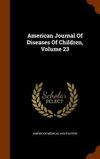Education concerning whiplash shaken infant syndrome: an unmet need.
American journal of diseases of children
Pub Date : 1990-11-01
DOI:10.1001/ARCHPEDI.1990.02150350010005
引用次数: 2
Abstract
Sir .—The article by Alexander et al 1 that appeared in the January issue of AJDC is one of several in the recent pediatric and radiological literature demonstrating both the morbidity and mortality associated with the whiplash shaken infant syndrome (WLS) and the risk of repetitive injury. Unfortunately, neither the force needed to produce an acute injury nor the incidence of latent WLS resulting from clinically inapparent recurrent battery is known. Under these circumstances, parental education delineating the unique vulnerability of the cranial contents of young infants should be routine. Pediatricians and other medical personnel should listen for unasked questions and masked frustrations when parents discuss colic or other feeding problems, since these behaviors are antecedents in a significant proportion of cases of WLS. The plea for an educational campaign is not new, 2 and while such an effort may not avert the unfortunate outcomes discussed in the case reports,关于鞭打摇晃婴儿综合症的教育:一个未满足的需求。
亚历山大等人发表在AJDC一月号上的文章是最近几篇儿科和放射学文献中的一篇,该文献展示了与鞭打摇晃婴儿综合征(WLS)和重复性损伤风险相关的发病率和死亡率。不幸的是,既不知道产生急性损伤所需的力,也不知道由临床不明显的复发性电池引起的潜在WLS的发生率。在这种情况下,父母的教育应该是常规的,描述年幼婴儿颅内容物的独特脆弱性。当父母讨论绞痛或其他喂养问题时,儿科医生和其他医务人员应该倾听他们未提出的问题和隐藏的沮丧情绪,因为这些行为在很大比例的WLS病例中是先决条件。呼吁开展教育活动并不新鲜,虽然这种努力可能无法避免案例报告中讨论的不幸结果,
本文章由计算机程序翻译,如有差异,请以英文原文为准。
求助全文
约1分钟内获得全文
求助全文

 求助内容:
求助内容: 应助结果提醒方式:
应助结果提醒方式:


